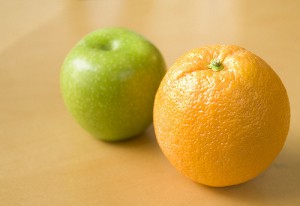
(Photo by TheBusyBrain at Flickr, CC License.)
I just can’t believe the gradbøying (”comparison inflection”) of adjectives has not been a post yet…
As you can probably remember, Norwegian adjectives take various endings:
-e when it’s describing a definite noun (these often come with ”the” in English): den glade jenta (the happy girl), den fine tegningen (the nice drawing), Guttorms lange arbeidsdag (Guttorm’s long working day/the long working day of Guttorm)
-e whenever the noun described is in plural: tunge sekker (heavy bags), dekorasjonene er nydelige (the decorations are gorgeous)
-t when the noun described is neuter and indefinite (these often come with ”a” or ”an” in English): et surt eple (a sour apple), huset er veldig dyrt (the house is very expensive)
Okay, now let’s compare stuff… 🙂 Heldigvis (luckily), the system works more or less as in English:
Slalom er mer utfordrende enn langrenn, men telemark er mest utfordrende! (Slalom is more challenging than cross-country skiing, but telemark skiing is the most challenging!)
Min far er sterkere enn din, men far til Stian er sterkest! (My dad is stronger than your dad, but Stian’s dad is the strongest!)
Rule-of-thumb: Long adjectives (four or more syllables, or with the ending -ende such as spennende ’interesting’) take mer and mest. Other adjectives take the endings -ere and -est.
The only letter ever added to these, is –e, as in: den kjedeligste filmen (the most boring movie)
Of course, the crazy people who designed Norwegian made room for some bugs! 😉
liten – mindre – minst (small, smaller, smallest)
stor – større – størst (big, bigger, biggest)
lang – lengre – lengst (long, longer, longest)
tung – tyngre – tyngst (heavy, heavier, heaviest)
ung – yngre – yngst (young, younger, youngest)
dårlig – verre – verst (bad, worse, worst)
god – bedre – best (good, better, best)





